Kingdom Animalia Order Lepidoptera Tribe Phycitini Scientific name Plodia interpunctella Rank Species | Phylum Arthropoda Family Pyralidae Genus Plodia
Guenée, 1845 Higher classification Plodia | |
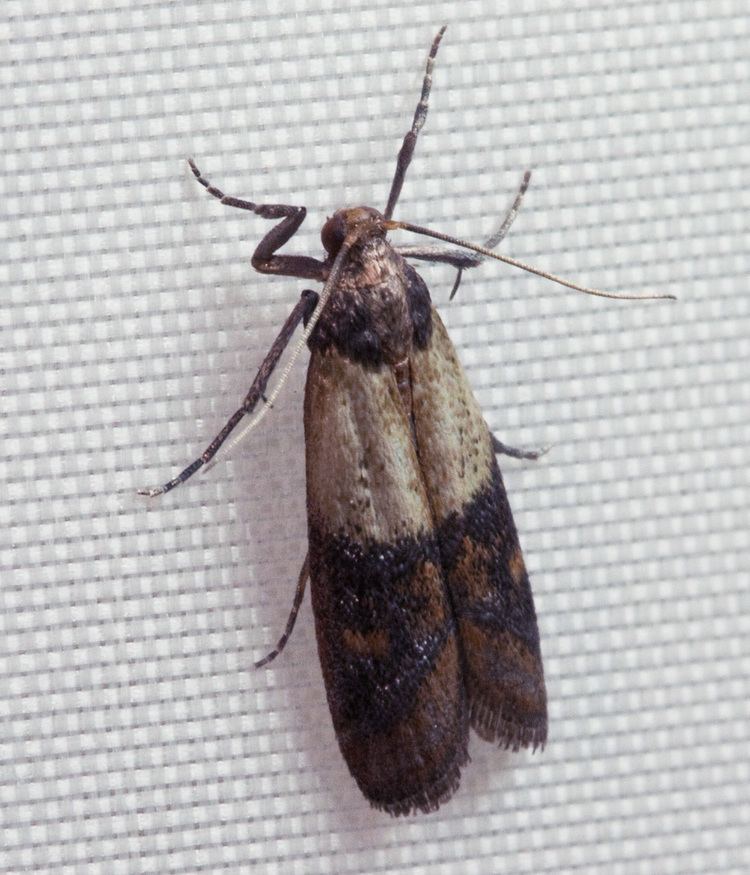 | ||
Similar Insect, Mediterranean Flour Moth, Ephestia, Pyralidae, Common clothes moth | ||
The Indian mealmoth (Plodia interpunctella), alternatively spelled Indianmeal moth, is a pyraloid moth of the family Pyralidae. Alternative common names are weevil moth, and pantry moth; less specifically, it may be referred to as flour moth or grain moth. The almond moth (Cadra cautella) is commonly confused with the Indian mealmoth.
Contents

Its larvae (caterpillars) are commonly known as waxworms like those of its relatives, though they are not the particular waxworms often bred as animal food. They are a common grain-feeding pest found around the world, feeding on cereals and similar products.

Systematics and etymology
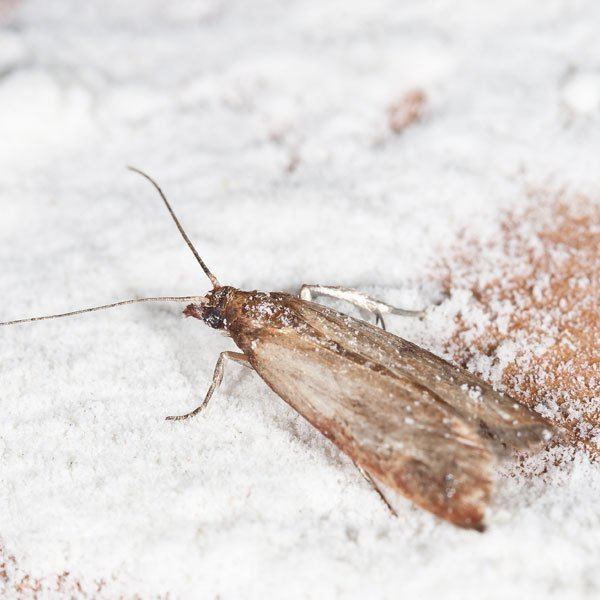
This is, as far as is known, the only living species of the genus Plodia. It is closely related to the (doubtfully distinct) genera Cadra and Ephestia which include other pest species (e.g. E. kuehniella which is also colloquially called "flour moth").
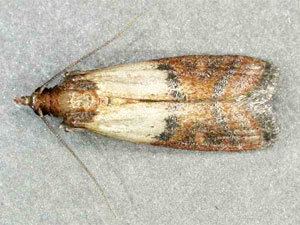
The species has been described under a number of junior synonyms, which may occasionally still be found in nonentomological sources:
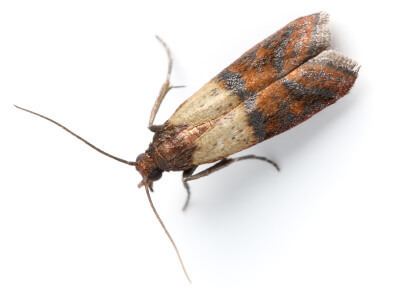
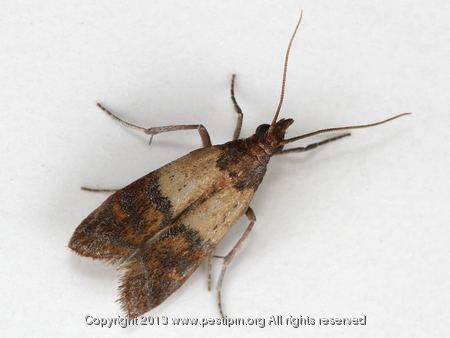
The common name for this species was coined by Asa Fitch, an entomologist employed by the state of New York in the 19th century. In a report published in 1856, Fitch discussed the species, noting the larvae infest stores of cornmeal, which was then called "Indian meal".
Description and lifecycle
Adults are 8–10 mm in length with 16– to 20-mm wingspans. The outer half of their fore wings are bronze, copper, or dark gray in color, while the upper half are yellowish-gray, with a dark band at the intersection between the two. The larvae are off-white with brown heads. There are 5-7 larval instars. When these larvae mature, they are usually about 12 mm long. "They have five pairs of well developed prolegs that help them move considerable distances to pupate."[1]
The entire lifecycle of this species may take 30 to 300 days. Female moths lay between 60 and 400 eggs on a food surface, which are ordinarily smaller than 0.5 mm and not sticky. The eggs hatch in 2 to 14 days. The larval stage lasts from 2 to 41 weeks, depending on the temperature.
Pest status and pest control
The Indian mealmoth larvae can infest a wide range of dry foodstuffs of vegetable origin, such as cereal, bread, pasta, rice, couscous, flour, spices, or dried fruits and nuts. More unusual recorded foods include chocolate and cocoa beans, coffee substitute, cookies, dried mangelwurzel, and even the toxic seeds of jimsonweed (Datura stramonium). They have also been known to infest commercial pet food, such as cracked corn used for bird feed. The food they infest will often seem to be webbed together.
After larvae or moths have been found, it is important to throw out all food sources not in very tightly sealed containers. Moth larvae can chew through plastic bags and thin cardboard, so even unopened packages may become infested. They are also notoriously difficult to get rid of, and can crawl on ceilings and spin cocoons in rooms other than the kitchen or pantry where they hatched. Last instar larvae are able to travel significant distances before they pupate. When seeking the source of an infestation, the search thus cannot be limited to the immediate area where pupae are discovered.
None of the stages of the organism (eggs, larvae, adults) is very temperature-tolerant and all can be killed by a week of freezing or by brief heating in a microwave or conventional oven when such treatment is practical. Scrubbing infested areas with a mixture of soap and water or vinegar is also effective.
Nontoxic traps are also available to monitor outbreaks. One type of trap is a triangular box with a pheromone lure and sticky walls inside. These traps are generally known as pheromone traps. In this case, male moths are attracted inside by the female pheromone (the lure) and then get stuck against the sticky walls inside of the box.
Moths often do not even need a lure, as common glue traps sometimes work well to reduce the number of adults. However, the efficiency of such traps is highly doubtful as they only capture males, and usually only a fraction of these, while adult females, eggs and larvae are unaffected, enabling a possible reinfestation. Moths can be deterred from the area by using essential oils and nontoxic pantry moth spray. It is most effective to treat the infestation by eliminating the source and any affected food items, interrupting their mating processes, and repelling them from the areas where dried food and grains are kept. Thus it is recommended to first eliminate the source of infestation followed by larvae, eggs and eventual moths in the environment.
The caterpillars are parasitized by Habrobracon hebetor, a braconid wasp which is a potential biological control agent.
